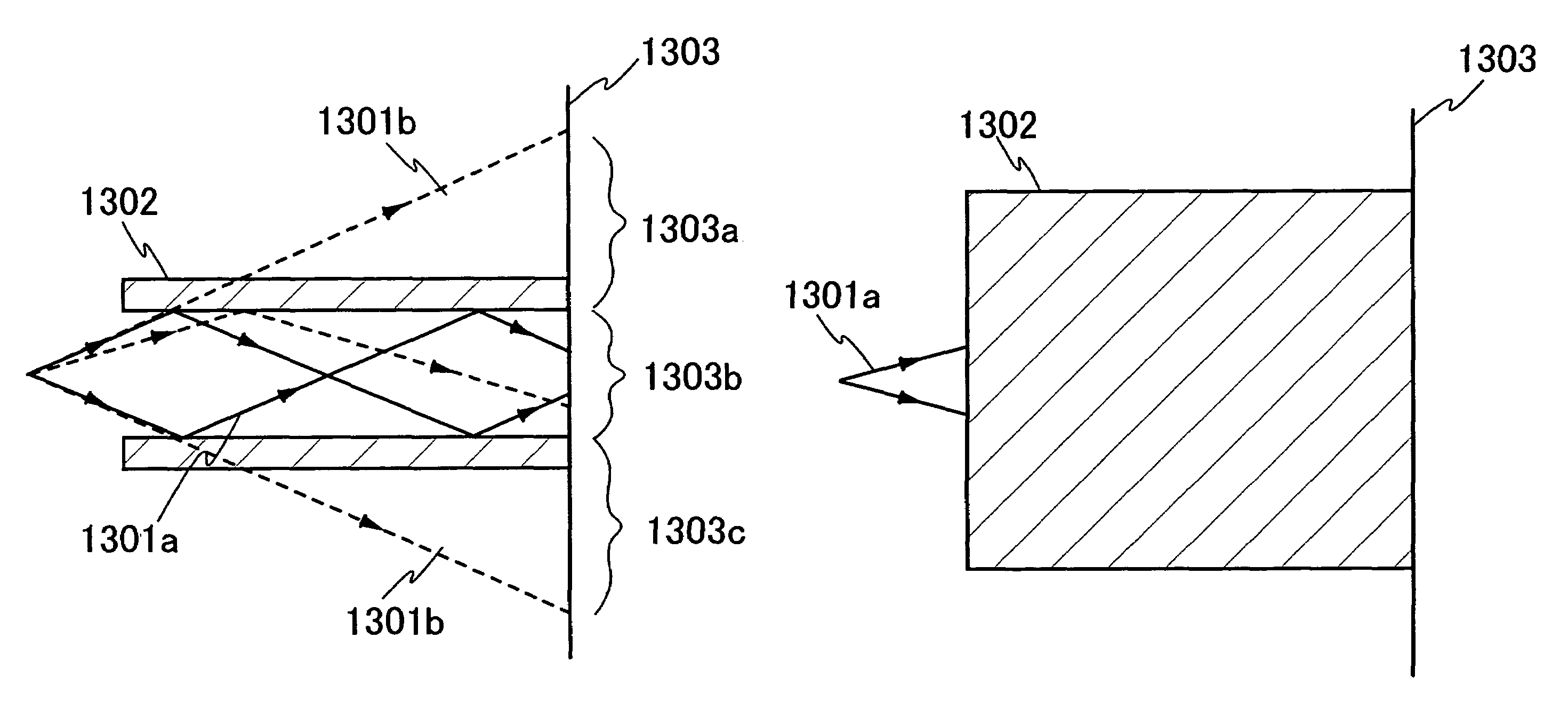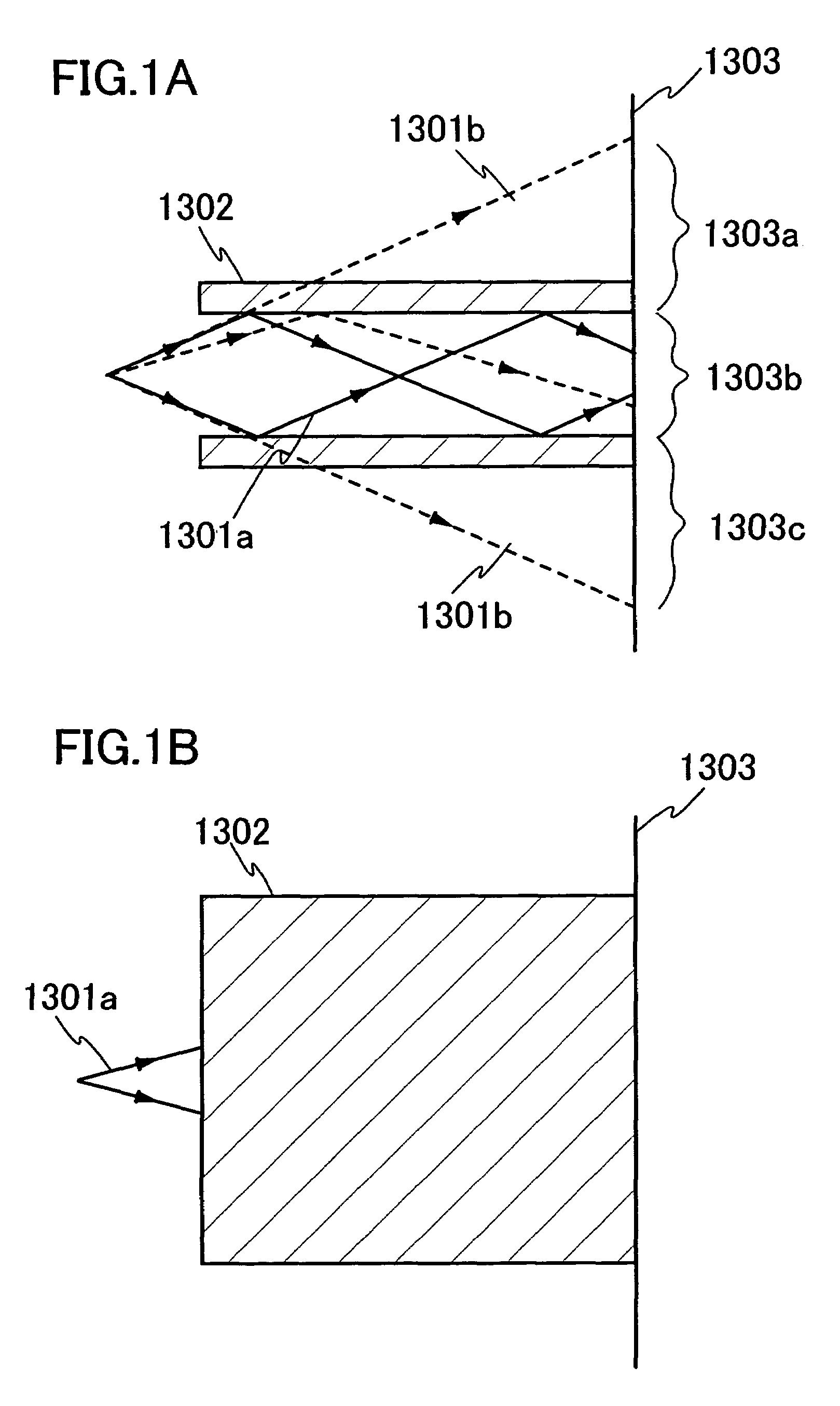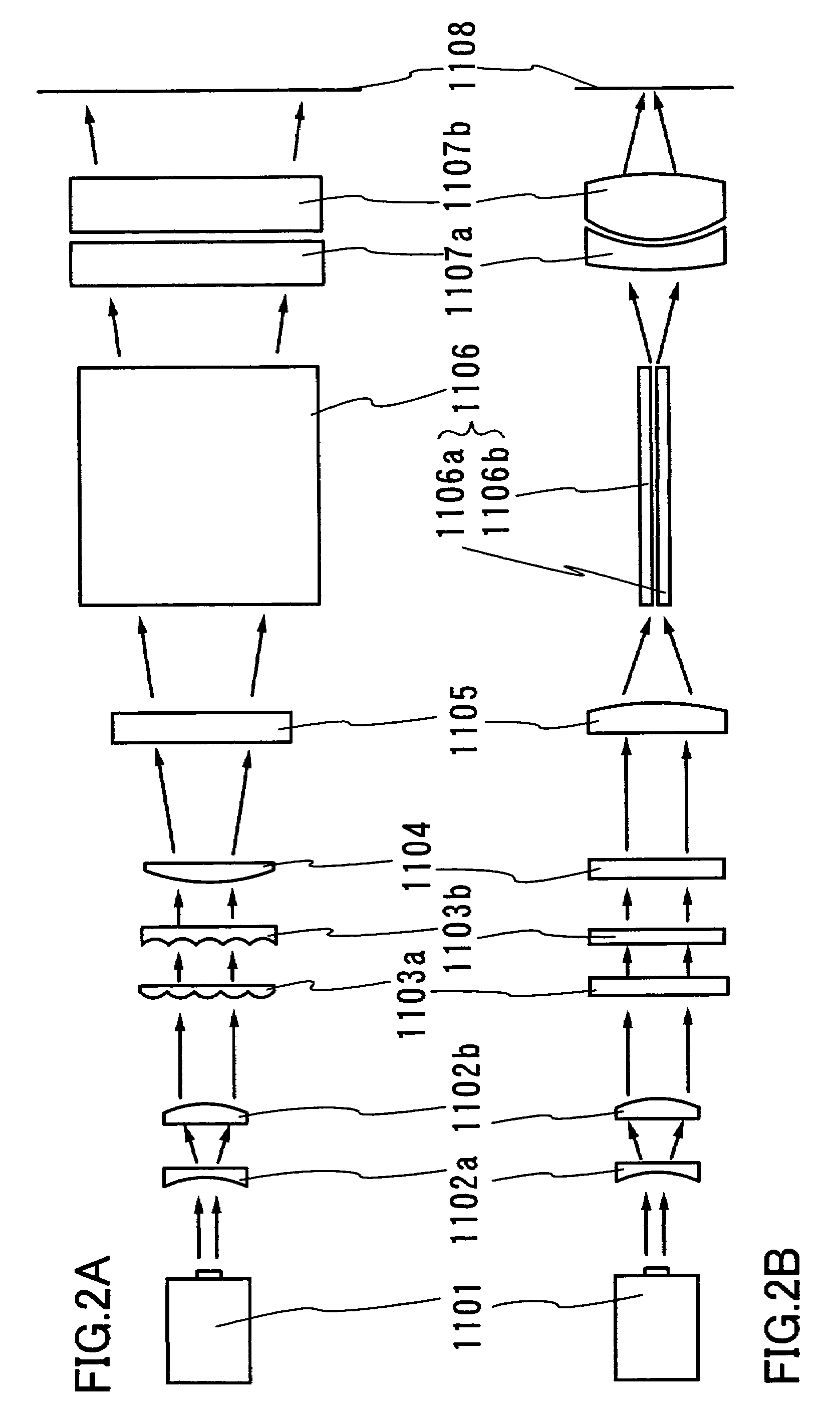Beam homogenizer and laser irradiation apparatus and method of manufacturing semiconductor device
a laser irradiation and beam homogenizer technology, applied in the direction of manufacturing tools, instruments, gel state, etc., can solve the problems of inhomogeneity, striped pattern fade into the background, and the output of the laser oscillator is averaged, so as to increase the number of beams, and increase the uniformity of energy distribution
- Summary
- Abstract
- Description
- Claims
- Application Information
AI Technical Summary
Benefits of technology
Problems solved by technology
Method used
Image
Examples
embodiment 1
[0064]An example of optical system other than the above-described optical system will be described here.
[0065]FIGS. 4A and 4B show an example of the optical system to be explained in this embodiment. First, a side view of FIG. 4B will be described. A laser beam emitted from the laser oscillator 1401 is propagated toward a direction of arrows indicated in the drawing. The beam spot is reduced in size in a direction of its shorter side using a 10 mm-thick cylindrical lens 1402 having a second surface of −182 mm in curvature radius. The light guide 1405, which has two reflective surfaces 1405a and 1405b facing to each other, is so placed that the beam inlet thereof lies in a focused area of the cylindrical lens. The light guide 1405 homogenizes the energy distribution of a beam spot. The light guide 1405 has a length of 300 mm in a direction in which a light beam travels and a distance of 0.4 mm between the reflective surfaces. An irradiation surface 1406 is placed at a location 0.2 mm...
embodiment 2
[0068]An example of optical system other than the above-described optical systems will be described here. FIGS. 6A and 6B show an example of the optical system to be explained in this embodiment.
[0069]First, a side view of FIG. 6B will be described. In this drawing, a laser beam goes through exactly the same optical path as illustrated in FIGS. 4A and 4B until the laser beam reaches the light guide 1605 having two reflective surfaces 1605a and 1605b facing to each other. The light guide 1605 has two reflective surfaces facing to each other like the light guide 1405. The light guide 1605 measures 900 mm long in a direction in which a light beam travels and has a distance of 2.6 mm between the reflective surfaces. A light beam output from the light guide 1605 is shaped so as to form a rectangular beam spot measuring 2.6 mm in its shorter side with the energy distribution homogenized in a direction of the shorter side. The light beam output from the light guide 1605 is reduced in size ...
embodiment 3
[0073]An example of optical systems other than the above-described optical systems will be described here. FIGS. 8A and 8B show an example of the optical system to be explained in the embodiment.
[0074]In the drawings, a laser beam goes through exactly the same optical path as illustrated in FIGS. 4A and 4B except the light guide 1805. The light guide 1805 has two reflective surfaces facing to each other like the light guide 1405. The light guide 1405 has a hollow space between the two reflective surfaces facing to each other, whereas the light guide 1805 has a space filled with a medium 1805c having a refractive index of n between the reflective surfaces. This is different point between the two examples. In the case where the refractive index n of the medium is larger than that of the material from which the reflective surface is formed, a light beam is totally reflected off the reflective surface when the light beam enters the light guide 1805 at a angle smaller than or equal to th...
PUM
| Property | Measurement | Unit |
|---|---|---|
| Time | aaaaa | aaaaa |
| Length | aaaaa | aaaaa |
| Distribution | aaaaa | aaaaa |
Abstract
Description
Claims
Application Information
 Login to View More
Login to View More - R&D
- Intellectual Property
- Life Sciences
- Materials
- Tech Scout
- Unparalleled Data Quality
- Higher Quality Content
- 60% Fewer Hallucinations
Browse by: Latest US Patents, China's latest patents, Technical Efficacy Thesaurus, Application Domain, Technology Topic, Popular Technical Reports.
© 2025 PatSnap. All rights reserved.Legal|Privacy policy|Modern Slavery Act Transparency Statement|Sitemap|About US| Contact US: help@patsnap.com



